These materials include correspondence regarding unclaimed letters sent to the outing home of patron Virginia Allen, where former student Nellie Thompson remained following the closing of the Carlisle Indian School.
1919
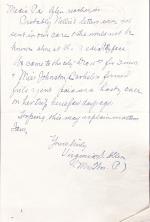
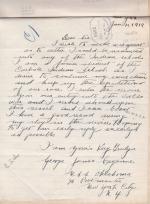
These materials include correspondence regarding a request of George James Cayenne, a former student at Carlisle, to enroll again in an Indian School following his service in the U. S. Navy aboard the U.S.S. Oklahoma during World War I.
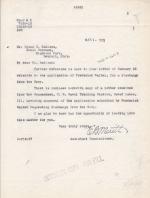
This document contains correspondence between Lyman B. Madison and Assistant Commissioner E. B. Merritt concerning Frederick Walker's request to discharge from the United States Navy.
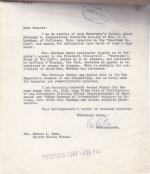
Cato Sells replies to Henry G. Thomas, Secretary to Senator Robert L. Owen, regarding the request of Mrs. C. D. Markham for information on the American Indian. Sells provides some information about a publication about Geronimo, the reason for the return of the Carlisle Indian School to the War Department, and encloses the Annual Report for the…
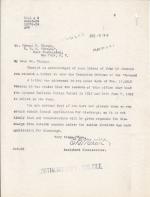
This material includes correspondence between Edward P. Thorpe and Assistant Commissioner E. B. Merrit concerning Thorpe's desire to be formally discharged from the United States Navy.
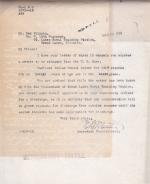
This material includes correspondence between Ned Wilnota and Assistant Commissioner E. B. Merritt concerning Wilnota's request to be discharged from the Navy.
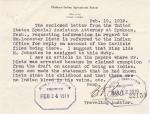
These materials include an inquiry into the enrollment and employment status of William Henry "Lonestar" Dietz at Chilocco and Carlisle. The Office of Indian Affairs was asked to provide records about Dietz to clarify Dietz's citizenship, after he claimed exemption to the draft for the First World War based on his Indian heritage.
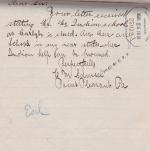
Inquiry from Charles Samuel to the Office of Indian Affairs regarding having an outing student placed at his home.
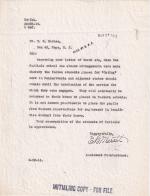
W. H. Bowers requests assistance from the Office of Indian Affairs in securing an outing student from the Carlisle Indian School following the school's closure.
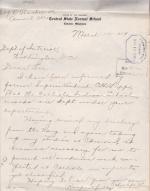
These materials include correspondence regarding the academic record of Charles Ape-Kaum following his discharge of the Navy and prior to taking up his studies again at the Central State Normal School in Edmond, Oklahoma.
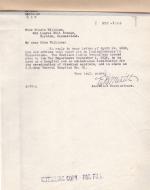
Minnie Williams, who is "partly of Indian descent," asks Commissioner of Indian Affairs Cato Sells if there are any Indian schools in Connecticut and for information on the Carlisle Indian School. Sells informs Williams that there aren't any Indian schools in Connecticut and that Carlisle closed in 1918 and was converted to a military hospital…
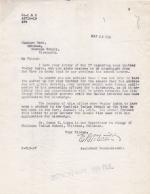
This document contains correspondence between Wesley Aaron and Assistant Commissioner E. B. Merritt concerning Aaron's desire to leave the Navy.
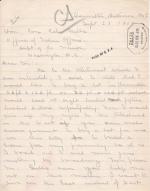
These materials include correspondence regarding an attempt by Alaskan student Joseph S. Sheehan to purchase land in Baltimore.
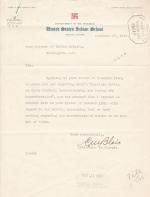
The Arthur H. Clark Company informs the Commissioner of Indian Affairs that they shipped a set of Volume 2 of "American Indian, as Slave-Holders, Secessionists, and During the Reconstruction" to the Carlisle Indian School and that they have not been paid because the school is closed.
Assistant Commissioner E. B. Meritt asks the…
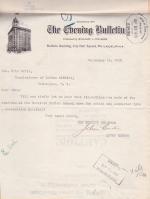
These materials include correspondence regarding a request of John Curtis, of the Evening Bulletin in Philadelphia, Pennsylvania, regarding the disposition of students following the closing of the Carlisle Indian School.
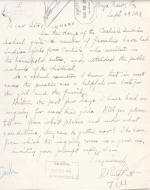
Inquiry from A. Reist Rutt regarding continuing the outing program following the closure of the Carlisle Indian School.
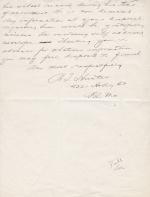
These materials include correspondence regarding an inquiry by R. T. Hunter seeking information about Leroy Fitswal during his time at Carlisle.
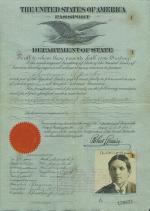
Passport and accompanying documents of Antonio Apache.
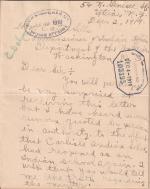
These materials include correspondence regarding an inquiry by Edwin C. Allen about re-enrolling at the Carlisle Indian School after hearing rumors that the School was being reopened.
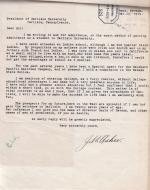
These materials include correspondence regarding a request by J. W. Asher to enter the Carlisle Indian School following its closing.
